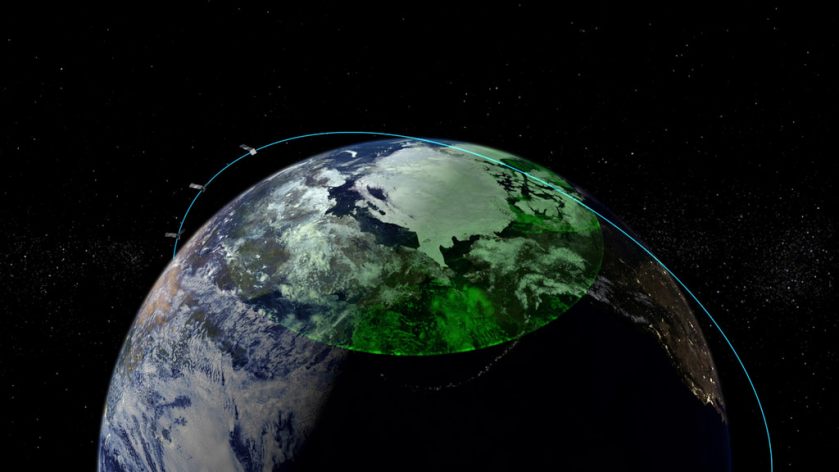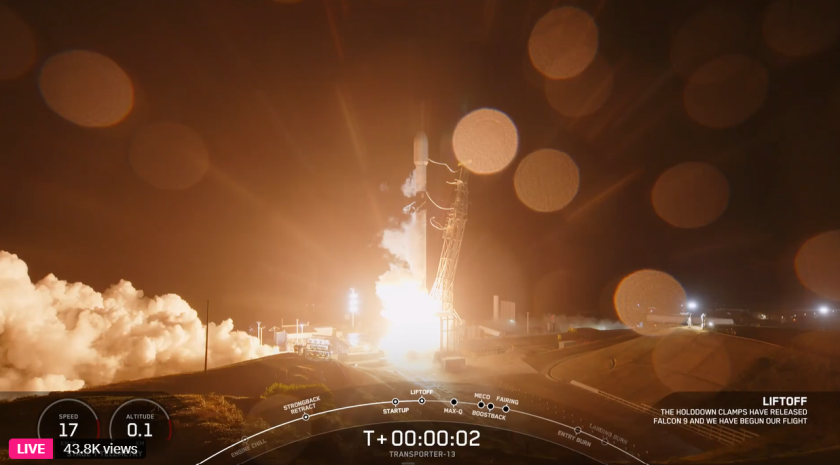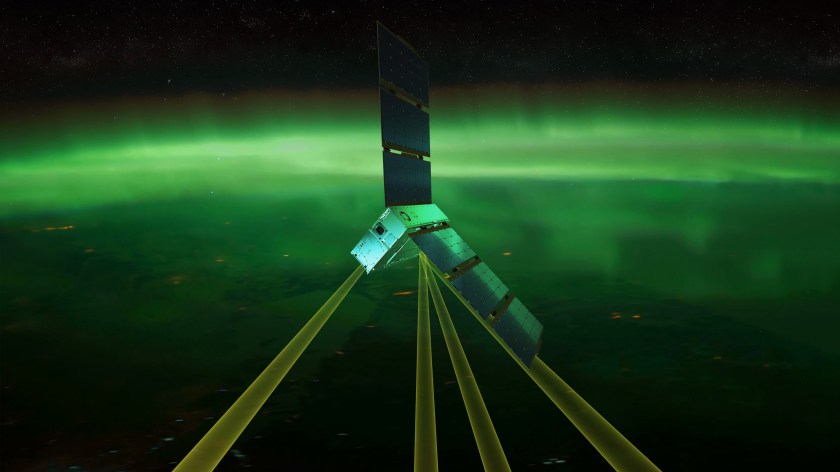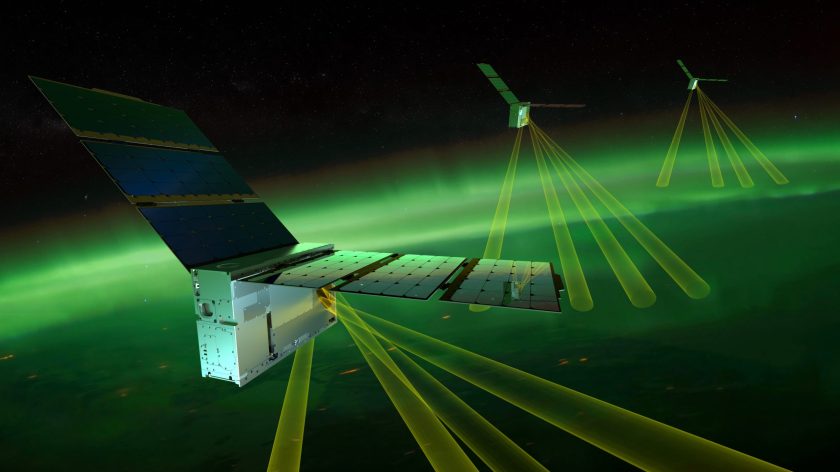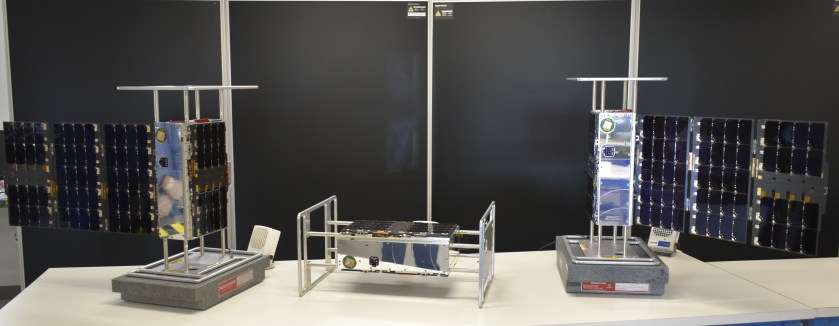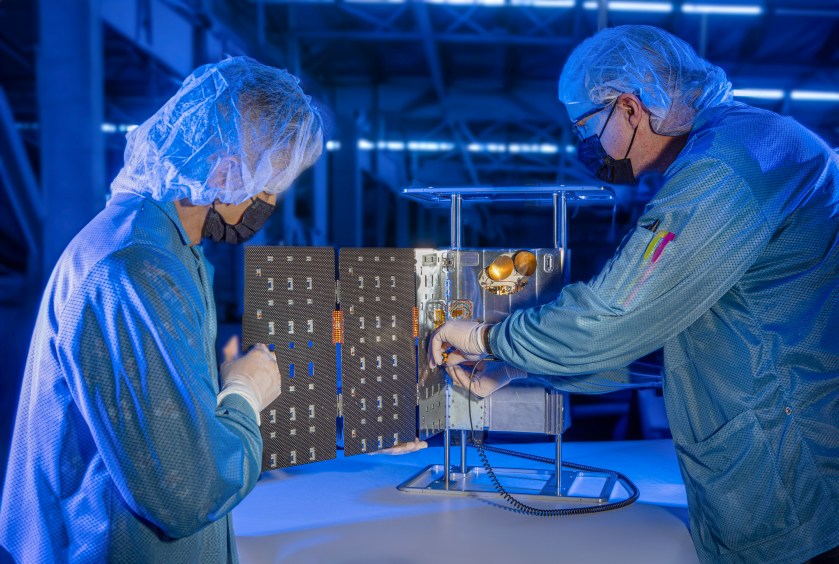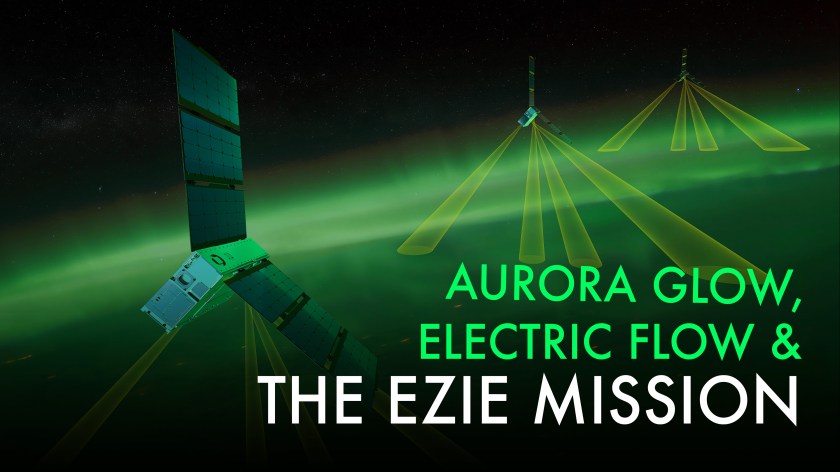
At 3 p.m. EDT on Monday, March 24, hear from experts and ask your questions about NASA’s newly launched EZIE (Electrojet Zeeman Imaging Explorer) mission to investigate auroral electrojets, intense electrical currents that flow through our upper atmosphere in the polar regions where auroras glow in the sky. The EZIE trio of spacecraft launched March 14 PDT from Vandenberg Space Force Base in California.
Watch “NASA Science Live: New EZIE Mission to Study Magnetic Fingerprints of Earth’s Aurora” on Facebook, YouTube, and NASA+.
During the event, EZIE team members from the Johns Hopkins Applied Physics Laboratory and NASA’s Goddard Space Flight Center will describe how EZIE is studying the magnetic fingerprints of auroral electrojets up close and in detail for the first time. Rapid changes in these currents can disrupt our technology and lead to effects such as power outages. Examining the electrojets will improve our understanding of space weather and help mitigate its negative impacts on society, for the benefit of all.
Our experts will also share how students and citizen scientists can participate in NASA research and contribute to EZIE’s mission.
Viewers can use the hashtag #askNASA on social media or leave a comment in the chat section on Facebook to submit their questions about EZIE, auroras, electrojets, and how to get involved.
After the live event, a recording will be available at the sites above as well as on the NASA Science Live web page.
The EZIE mission is funded by the Heliophysics Division within the Science Mission Directorate at NASA Headquarters in Washington and is managed by the Explorers Program Office at NASA’s Goddard Space Flight Center in Greenbelt, Maryland. The Johns Hopkins Applied Physics Laboratory in Laurel, Maryland, leads the mission for NASA. Blue Canyon Technologies in Boulder, Colorado, built the CubeSats, and NASA’s Jet Propulsion Laboratory in Southern California built the Microwave Electrojet Magnetogram, which will map the electrojets, for each of the three satellites.

